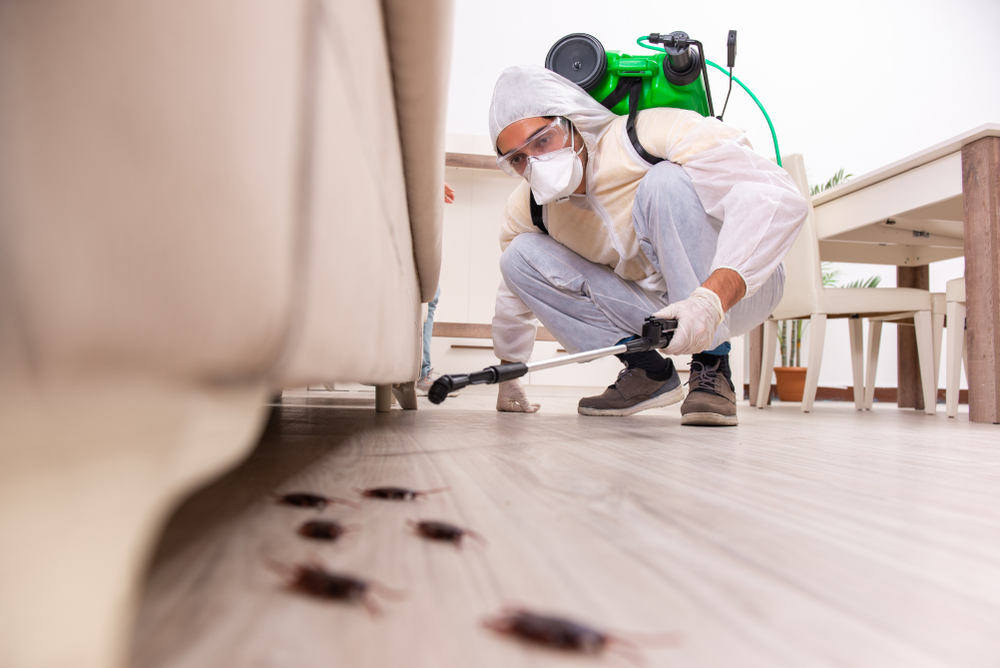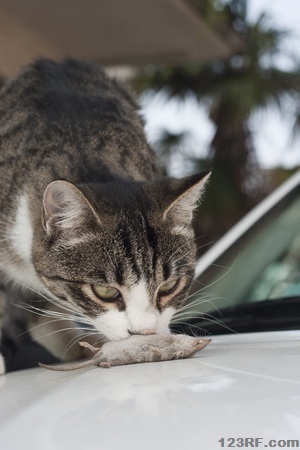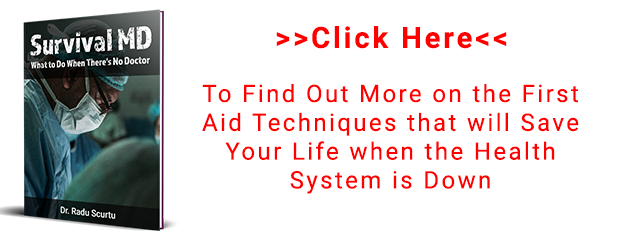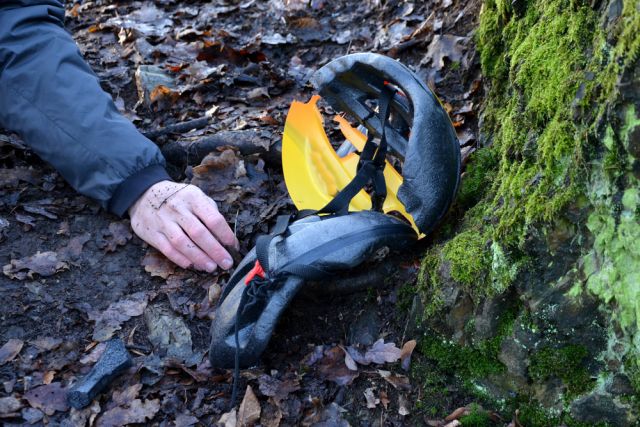If there is one thing our youngest cats, Gizmo and Carmela, agree on, rodents do not belong in the house.
While I may not be as inclined as they are to establish and patrol household borders, I admit that rodent infestations are a concern that we must all deal with as safely and efficiently as possible. Unfortunately, getting rid of an active infestation is only the beginning of actually managing rodent problems. Here are some essential steps and precautions you must take after getting rid of these unwanted guests from your home.
Vital Safety Gear
Before you begin cleaning up rodent associated debris, make sure to take precautions to reduce exposure to rodents pathogens and chemicals used to clean up the mess. By the same token, if you wind up using disinfectants other than bleach or must work in a tightly enclosed area with poor ventilation, these chemicals can cause lasting damage to your lungs, skin, and other organs. There is no need to make a rodent problem worse by failing to wear the best possible safety gear for the job.
Here are the most important items that you should use during the cleanup process.
- Chemical Resistant Rubber Gloves to Elbows – aside from keeping out harmful pathogens, you may wind up using various cleaners that can burn your skin or do other damage to it. Ensuring that you are covered to your elbows will reduce the risk of contaminated or dangerous liquids spraying onto your arms.
- Goggles – there is no such thing as a cleaning solution that won’t splash for one reason or another. Wearing goggles is the safest way to make sure your eyes stay safe from these liquids. Also, some cleaners that you use may evaporate quickly into the air and irritate your eyes. Keep an eyewash kit on hand in case you need to rinse out your eyes for one reason or another.
- Activated Carbon/Bacteria/Dust Proof Breathing Mask – while a mask will not reduce or eliminate the need for robust ventilation, it can still help reduce the number of dangerous chemicals that get into your nose, mouth, and lungs. Similarly, since some of the most dangerous diseases associated with rodent infestations can quickly get into the air during the cleaning process, it is vital to wear a mask to filter out bacteria and dust. Even if you need to wear two types of masks or purchase a more robust respirator, it is well worth the effort and expense.
- Face Shield – today, most people don’t give much thought to the number of times they touch their face or rub their eyes. While cleaning, you may realize you should not touch your face with soapy or wet hands, only to use an elbow or sleeve to rub your face. Aside from helping reduce exposure to splashes and spills that reach your face and hair, this protective gear will remind you not to touch your face or hair while cleaning.
- Chemical Resistant Disposable Suit – be sure to choose a suit that includes shoe coverings and a hood. Your hair should be entirely tucked into the hood so that it does not come into contact with water splashes, dust, or other debris. Remember, when cleaning, you will be dealing with all kinds of liquid chemicals that may or may not be carrying disease bearing organisms. The less exposure your body has to these chemicals and pathogens, the better.
- List of All Chemicals You Will be Using and Safety Precautions – while you may know it is not safe to mix bleach and ammonia, there are several products that you may decide to use while cleaning up after a rodent infestation. It is essential to make sure that all of the cleaners are safe to use together, and if not, how to use them safely in a sequence. Having a list and a plan of action before you start can save your life and well being.
- Bite Resistant Gloves – when you first discover rat or mouse droppings, it may not be possible to determine the number of animals, let alone the size of each of them. Under these circumstances, you may have large rats in the mix that will not hesitate to bite you if they feel threatened or if you try to disrupt them. Similarly, a rodent that has given birth or has young pups around may also be more aggressive.
- Prodding Stick – never put your hands, feet, or kneel on a pile of paper, grass, or anywhere else that might be hiding a rodent. That includes never putting your hands in a barrel, hole, or other recessed areas. Even if you are wearing bite-resistant gloves, it can still be a chilling experience to feel a rodent’s jaws closing on your gloved hand. Using a prodding stick can save you a lot of stress and upset. Be sure to use the prodding stick even if you have not seen a rodent around for at least one week. It never hurts to be safe, especially when you may find dozens of chewed areas and openings in woodwork or other areas where live mice may still be hiding.
- Small Sledge Hammer – keep a hammer or sledgehammer on hand if you encounter a rodent that needs to be dispatched. That includes rodents that you find in traps that are still alive and others that you may be able to catch while they are running around. Remember, rodents will always look to run alongside a wall. Thus, if you drive one out into the open, it will head in that direction and be more comfortable to catch.
The Basic Process and Cleansers
When it comes to cleaning rooms or buildings, cleaning up after a rodent infestation is similar. Here are the steps you will need to take:
- Start by making sure you have resolved the active component of the infestation. Be sure to go through and seal off all holes in walls, screens, windows, doors, and other areas where mice and rats can squeeze into. Remember, rodents can compress themselves and chew through just about anything if they think it is worth it. Any small chink, hole, or weakness can become an entry point to a determined rodent. Use traps, poison, or whatever else you need to use to eliminate all the rodents in the building or vehicle.
- Once you no longer see active signs of active infestation, wait one week before starting the cleanup operations so that bacterial, fungal, and viral infections in feces, urine, saliva, blood, and other body fluids begin to die off. You must see no new signs of infestation during this week.
- Make sure you have adequate ventilation during the cleanup process. Open windows, turn on fans, or use other methods to ensure the room is as aired out as possible just before you start cleaning and during the process. Remember, urine has ammonia in it, and this is never safe to mix with bleach. Proper ventilation is essential to prevent poison gas build-ups and exposure.
- There are several different cleansers that you can use. First, start with a disinfectant. Most people use bleach in a ratio of 1 part bleach to 10 parts water. You can also use non-bleach disinfectants, but be sure to follow the directions on the label for proper dilution and soaking time. Remember, even the best disinfectant may require several minutes of soaking time before it kills off all the germs that are susceptible to it. That includes surface aerosol sprays and solutions that you mix with water and sponge or spray onto the surface. Once you remove the contaminated material, you can follow up with regular soap or detergent to remove any additional debris and then follow up with an extra round of disinfectant. It is best to let the area air dry for at least 48 hours between cleanings to allow more time for pathogens to die off.
- During the cleanup process, never vacuum, dust, or sweep because dust particles from the rodent infestation can carry some diseases that can make you sick if you breathe in the dust.
- Ensure you are wearing proper safety gear before you begin to clean up the mess left by rodents.
- Start by going through any furniture, food, or other objects that have been chewed or damaged by the rodents. Throw them out if they are too dirty, cannot be disinfected, or have scratches or bite marks on them. Before handling any object that has rodent feces, urine, or other body fluids on it, spray it down with 1 part bleach to 10 parts water, and let it sit for 5 minutes.
- For items that you want to save and walls, countertops, cabinets, and floors, carefully wipe up the bleach solution with the rodent residue and place it in a plastic bag.
- Once you are down to walls and floors, you will need to repeat the disinfection process. If you have carpets with signs of feces and urine on them, it will be up to you to decide whether to try and save them. You can try disinfecting them with non-bleach alternative solutions and then use deep steaming carpet cleaners to finish up the process. However, rugs and carpets allow dust and all kinds of other things to leach through them. You will still need to pick up the carpet and address problems that may be idling on the floor below. After you disinfect the walls and floors, you can go ahead and lace the carpets or use linoleum tiles or some other floor covering in its place.
- After removing all signs of feces, urine, and other rodent leavings, give one final mop and disinfection through the entire area.
- If you are working in a room or building with a dirt floor, you will need to spray the dirt floor with the disinfectant solution. In a situation where you are working with a cement floor, unsealed wood, or other porous surfaces, you may need to use special cleaners or spray the floor down with more disinfectant to ensure you kill off any pathogens hiding there.
- To clean drapes, clothing, bedding, or other textiles, wash them with hot water, laundry detergent, and disinfectant. Today, several non-bleach disinfectants can be used for garments that cannot be cleaned with bleach. Unfortunately, there is no way to get around using hot water; so any textile that cannot withstand hot water will have to be discarded.
- As a final note about buildings and rooms, there may be times when rodents get into air ducts for heating and cooling systems. Unfortunately, cleaning these ducts can be an expensive and complicated job. You will need to hire a professional duct cleaner that can safely remove rodent debris from the vents or make repairs as needed.
Stay close for the second part of this article when we will talk about Common Diseases and How to Protect Yourself.














































































I read in this that no vacuuming at all?
How about the use of a HEPA filter ?
We’ve used heavy duty 30% cleaning vinegar spray & hand held vacuum to get behind/between large bench or safe. Bleach causes migraines.
Suggestion-options?
Sweeping is difficult in tight spaces.
Have continually set traps. Baits? Have pets. Cat will capture & toy w any mouse he catches on the occupied main floor. 5+ & counting that we know of.
Well written, good content.
Thank you.